Could suspected murder victim, back from the dead, be an impostor?
Produced by Chuck Stevenson
Mary Day was 13 when she vanished from her family’s Seaside, California, home in 1981. There is no record of her parents ever reporting her missing.
“I can’t remember a time when a child was not reported by the parents,” former Seaside Police Chief Steve Cercone told “48 Hours” correspondent Maureen Maher.
Sherrie Calgaro, who was 10 when her sister disappeared, was told Mary ran away. The family was not allowed to talk about Mary, said Calgaro, who was haunted by what happened. When she became an adult, she reported her sister missing.
“My mother told me that there were a lot of places in California that you could bury a body and they’d never be found,” Calgaro said. “I started believing she was murdered.”
Years later, after her sister got police on the case, they believed she was murdered, too.
But then there was a turn no one saw coming. “And I’m like, “This case just gets weirder and weirder,” said Cercone.
Seaside, California, Detective Joe Bertaina first heard the name Mary Louise Day back in 2002. He’d been asked to lead the investigation into her disappearance.
Det. Joe Bertaina: The case was … a tangle of weeds that went all different directions.
Mary was gone — seemingly without a trace.
Det. Joe Bertaina: There was no evidence that she was alive.
Bertaina’s boss at the time was Steve Cercone.
Steve Cercone | Seaside Police Department: Not a trace of her as an adult; no Social Security record of her having a job, getting welfare benefits … we have nothing on this person’s identity.
Maureen Maher: She didn’t exist?
Steve Cercone: She didn’t exist.
Mary’s existence came close to being completely erased; there’s no record that her stepfather William Houle or her mother Charlotte had ever reported her missing.

30 Photos
The mysterious disappearance of Mary Day
In 1981, 13-year-old Mary Day disappeared from her Seaside, Calif., home, with no sign of her anywhere. It would be 22 years before she reappeare…
Maureen Maher: It’s hard to believe … allowing a child to walk away or a child go missing and it’s not reported.
Steve Cercone: I can’t remember a time when a child was not reported by the parents.
Sherrie Calgaro: I couldn’t understand how a mother could not go to the ends of the earth to find her child.
It was Sherrie Calgaro, Mary’s sister, who finally got authorities on the case.
Sherrie Calgaro: I wanted to know what happened to my sister, Mary.
Sherrie was 10 when Mary went missing. As an adult, she filed a missing persons report and told the police about Mary’s troubled childhood.
Steve Cercone: The information we have through the sisters is that … it was a very dysfunctional household.
In their early years, Mary, middle sister Kathy, and Sherrie were in and out of a foster home. Their mother couldn’t take care of them. Sherrie was adopted by the foster family.
Sherrie Calgaro: We were separated when I was 6 years old.
Mary and Kathy were returned to their mother Charlotte. By this time, Charlotte had married William Houle and the couple had two kids of their own.
Houle was a soldier. The family moved around a lot from base to base. At one point, detectives say, Mary’s stepfather had been reportedly physically abusing her.
Steve Cercone: Children’s protective services had taken custody of Mary … she was eventually turned back over to the family. … In my opinion, the system failed.
At the time Mary disappeared, Houle was assigned to Fort Ord, on the California coast north of Monterey.
Det. Joe Bertaina: They were living in Seaside, which was kind of a military town at that time and that’s where she was last seen.
Sherrie, who kept in touch with her birth family, later visited them.
Sherrie Calgaro: When I went to visit my family, I asked them, “what had happened to my sister, Mary?”
Sherrie Calgaro: Kathy … was, like, “Shh — don’t say anything. We’re not allowed to talk about Mary.”
But Kathy did say her mother Charlotte told them that Mary had run away.
Sherrie Calgaro: At the time I wasn’t sure what I thought except that it didn’t make sense to me.
When Sherrie grew up, she filed that missing persons report. By the time Seaside Police launched its investigation in 2002, there was little to go on.
Steve Cercone: The neighbors barely recall the family living there … nobody really knew this family and they sure didn’t know Mary Day.
Mary had never been enrolled in school in California and her parents had never told anyone she was gone. Bertaina says they had at least one reason to keep quiet. Mary had been getting government checks because her birth father had died in an accident.
Det. Joe Bertaina: They were taking Mary’s social security checks and cashing them.
In March 2003, Detective Bertaina went to the Seaside home – Mary’s last known whereabouts. He brought Kathy with him. The visit was recorded.
Kathy Pires was just 11 when she last saw her sister.
Kathy Pires: That day lives in my head a lot. It feels like you’re opening a scab, you’re opening it up and it hurts.
Det. Joe Bertaina: Mary was at home along with Kathy when the rest of the family went out. … they came home later that evening, and while they were gone, the dog became sick and was dying in the kitchen area. When William saw that, he immediately accused Mary of poisoning the dog.
Kathy Pires: He started yelling at us … and I got scared … all hell broke loose…
KATHY PIRES [On video with detective]: This is corner where he was hittin’ her, the fight was back here…
Kathy Pires: [Crying] I can hear her yelling. There’s nothin’ we — we can do.
Maureen Maher: He hit her?
Kathy Pires: [breaks down]
KATHY PIRES: Last time I saw her, she had the blood coming out of her mouth.
Kathy said after Mary disappeared, her parents ordered the kids to stay away from one particular area of the backyard.
KATHY PIRES [on video with detective]: We were not supposed to come over to this part.
DET. JOE BERTAINA: You weren’t supposed to come over there? Who told you that?
KATHY PIRES: My father.
The clues were adding up and detectives felt that they could be dealing with something much more sinister than a runaway teenage girl.
They brought in team of cadaver dogs — dogs trained to find human remains.
Steve Cercone: As the dogs went into the back yard, they each hit on one particular spot near a tree.
Steve Cercone: We started to dig … As a father … my heart was pounding … and as we dug, I saw a little girl’s shoe … my heart started pounding even more and I thought … “Here we are. We found her.”
WAS MARY MURDERED?
In 2003, the missing persons case of Mary Day was quickly becoming a homicide investigation – with police facing the grim task of digging in the dirt where the cadaver dogs alerted.
Steve Cercone: And we kept digging — and there was no body. I said, “Well, it must be here.” … And they kept digging.
Maureen Maher: They were sure that a body had been there.
Steve Cercone: They were positive. They said, “our dogs don’t lie, and four of them independently hitting … on the same spot before we dug.”
Steve Cercone: The dog handler said … it’s been moved.
Steve Cercone: At this time, there was no question that the parents were the suspects in the possible homicide of a little girl from 1981.
Steve Cercone: We knew that we had to find the parents.
They found them in Kansas.
It was more than 20 years after Mary disappeared. Her stepfather William Houle had left the Army and was now at a Kansas prison working as a corrections officer. He and Charlotte were still together. She agreed to talk with local detectives about the daughter who vanished so long ago:
CHARLOTTE HOULE: You don’t have whips and chains do ya?
COP: Oh, absolutely not.
Steve Cercone: I remember watching the interview … and realizing that she had something to tell us.
CHARLOTTE HOULE: You know life is full of regrets. If you go back and say, you know, “if I had did this, and this and this.”
Steve Cercone: Her body language and then her sinking down in the chair and saying words to the effect of “you know, sometimes you do things in your past, and it comes back …” I knew that it was something there.
COP: When’s the last time you heard from Mary?
CHARLOTTE HOULE: ’81, last time she ran away.
Charlotte said Mary running away was no big deal; she did it all the time:
CHARLOTTE HOULE: Oh, what a mess. It was like trying to get … a night crawler out of a wormhole and just grabbin’ it and it was gone, and grabbin’ it, it was gone … I mean … how many times did she run away? You know, all of these questions I can’t answer.
COP: When you was back in California … did you guys take any kind of steps to find her?
CHARLOTTE HOULE: We should have, we should have.
COP: But you didn’t?
CHARLOTTE HOULE: … my husband says we filed a police report with the Salinas Police Department. If we did, I don’t remember.
There is no record of a report.
Steve Cercone: I couldn’t understand a parent — number one — not reporting their child as a runaway, but number two … treating this case, the status of their missing daughter as basically no big deal. It didn’t seem to really concern them … they were not really, really surprised at us being there.
Detective Bertaina later questioned Mary’s stepfather William Houle.
Det. Joe Bertaina: I just asked him, “Tell me about the last time that you saw Mary?”
He told me that well, he was going room to room checking on the kids and he discovered Mary wasn’t in the bedroom. He tells Charlotte, she panics, he panics, called the police.
Det. Joe Bertaina: And he knew I wasn’t buying that. I said, “William, she runs away all the time, why did you panic?” … I never got a good response.
The detective pressed Houle and brought up the story of the sick dog.
Det. Joe Bertaina: And he said five or six times, “You know what she did? She poisoned my dog. I was really angry” … “She tried to run out of the house. I didn’t want her to go, so I caught her before she got out of the front door. She was kicking me, punching me, so I pushed her” and when he’s doing this, he’s making a— [gestures with his hand].
Maureen Maher: A choking?
Det. Joe Bertaina: Yeah, gesture, he – yeah, with his hand, and it’s like a hand strike I’ve seen before … it’s a martial arts technique. So, I asked him, “Where’d you hit her with that?” And he said, “Well, in the upper chest.” And I said, “could it have been the throat? And he said, “It may have slipped off and hit her in the throat.”
Det. Joe Bertaina: I wanted to know on a scale from one to 10 his anger when he had done this, when he had struck Mary. He said on a scale of one to 10 “I was a 15.” And I said, “You’re this angry, I think you may have killed her.” He looked at me and said, “No, I didn’t kill her. But the next day my wife Charlotte told me that that night she saw Satan in my eyes. And she said I was possessed by a demon.”
Det. Joe Bertaina: And then it dawned on me that he’s admitting, but not admitting that he killed her. And I said, “OK William, I believe you, you didn’t kill her. But what about that demon inside of you? Could that demon have killed Mary?” And he looked at me and said, “Yes, the demon could have killed her.”
Maureen Maher: When he walked out did you think you were letting a killer go?
Det. Joe Bertaina: Yeah, yeah.
Steve Cercone: Joe said, “Yeah, we don’t have a body,” but he said, “This guy came so close to confessing,” it was as close as he’s ever had anybody come.
Maureen Maher: Is that enough to go to a prosecutor and say, “I don’t know if we’re ever gonna have a body, but we have a lot of pieces of the puzzle.”
Steve Cercone: Yeah, the DA wasn’t ready to file at that time.
Maureen Maher: Did you think there was enough?
Steve Cercone: I thought there was probably enough … I was not worried really, because I thought we are building the case here.
Then, just as the detectives’ confidence was growing, the case took an unexpected turn.
Remember, police had no record of Mary Louise Day as an adult; there were no credit cards, no driver’s license or ID recorded anywhere. There hadn’t been a trace of Mary in more than two decades — until police in Phoenix, Arizona, made a traffic stop.
Steve Cercone: I got a phone call … I was at home, I had left work. He told me, “Hey captain.” He says, “Are you sitting down?” I said, “What happened?” He said, “Just gotta let you know, Phoenix Police Department in Arizona pulled over a car and they say that they found Mary Day.”
AN UNEXPECTED APPEARANCE
November 2003, in Phoenix Arizona – it was a routine traffic stop: a pickup truck with stolen plates. When police ran the IDs of the passengers, one of them hit: a woman named Mary Day.
Det. Joe Bertaina: He said, “Joe, guess what? Mary Day’s been found.” And I was stunned.
Investigators had put Mary Day into a missing persons database long ago.
Det. Joe Bertaina: She identified herself with a Phoenix identification card. Or Arizona — state identification card.
Back in California, Detective Joe Bertaina felt like a ghost had just appeared. In his mind, Mary Day had been murdered more than 20 years earlier at the home of her parents.
Maureen Maher: You talk to William and Charlotte in April of 2003. And then, seven months later or so, a woman named Mary Louise Day just falls out of the sky.
Det. Joe Bertaina: Right, I was stunned.
His boss, Steve Cercone could not believe it.
Steve Cercone: Joe went down there, and he met her and he sent a picture of her, and we went, “What, wait a minute, no. Alright, alright.” It looked like it could be her.
Steve Cercone: I said, wait a minute, all these years, bits of circumstantial evidence.
Maureen Maher: The father almost confessing to something.
Steve Cercone: Almost confessing to the murder of a little girl.
And now, here was this woman 700 miles away with a valid Arizona state ID. Strangely, that ID had been issued only three weeks earlier, while the homicide investigation was underway.
Maureen Maher: You must have found the timing awfully suspicious.
Steve Cercone: Yes, it was very suspicious.
When Detective Bertaina went to Phoenix, the woman he was sure had been murdered told him she had run away from her mother Charlotte and stepfather William when she was a teenager. She basically lived under the radar and by her wits ever since. But she seemed hesitant, and her story seemed sketchy. Later in a phone call, Mary told Bertaina she had some awful memories:
DET. JOE BERTAINA [phone call]: Do you want to talk about what happened that last night?
MARY: It hurts.
DET. JOE BERTAINA: I’m sure it does … but what happened that last night?
MARY: I’m so confused anymore [sic], I don’t know what’s real or not. … I remember he kept slamming my head into the tub and it hurt [cries].
DET. JOE BERTAINA: Is that when you started bleeding?
MARY: I started bleeding and he hit my head on the coffee table … I think I blacked out … maybe that’s why I can’t put all the pieces together.
But she didn’t remember anything about the sick dog.
Maureen Maher: Was that troublesome to you?
Det. Joe Bertaina: That was, yeah.
Investigators say it was hard to pin down much of anything about her past two decades. They began to wonder if the woman with the freshly-minted ID was really who she claimed to be.
Maureen Maher: You refused to call her Mary Louise Day?
Steve Cercone: We called her Phoenix Mary.
In phone conversations, Phoenix Mary was sounding increasingly frustrated:
MARY [phone call]: Can I throw one question at you if you if you don’t mind?
DET. JOE BERTAINA: Go ahead, Mary.
MARY: If you were to find my body, how were you gonna be able to prove who the hell I was?
DET. JOE BERTAINA: DNA.
MARY: Oh, so since I’m still alive, you all can’t prove who I am?
DET. JOE BERTAINA: There’s no record of you ever being anywhere … it’s like you haven’t existed up until now.
MARY: So, I’d be better off if I’m just dead and then you all can do that detecting from there.
Steve Cercone: I said, “all right, let’s get a DNA test on this woman … let her prove that she’s the daughter of Charlotte.”
Steve Cercone: We’re gonna disprove that she’s Mary, of course, ’cause there’s no way her DNA’s gonna match.
Except it did match.
Steve Cercone: I nearly fell on the floor. I couldn’t believe it. The DNA came back positive to being a daughter of Charlotte.
The case was closed. Sherrie Calgaro invited her long-lost sister to move in with her. In most cases, that would be the end of the story – but not in this case.
Maureen Maher: So now DNA matches. Case closed.
Steve Cercone: Yeah, well, if it were that simple, right?
Once Phoenix Mary moved in, Sherrie started to have her own doubts.
Sherrie Calgaro: The first thing I noticed was she — it sounded like she had some weird, Midwest or southern accent. Weird to me.
The detectives had noticed that too:
DET. JOE BERTAINA [phone call]: That’s an interesting dialect you have Mary.
MARY: What do you mean?
DET. JOE BERTAINA: I don’t know I’ve ever heard that particular manner of speaking.
MARY: Then y’all still trying to prove who I am, huh?
DET. JOE BERTAINA: Yes, ma’am. We are.
Phoenix Mary also said she never used her real name:
MARY [phone call]: Nobody … knows me as Mary. I gave that name up years ago.
DET. JOE BERTAINA: What name would they know you by?
MARY: Monica Devereaux.
It’s a name she said she made up.
Sherrie Calgaro: I did notice that she had magazines in the name of Monica Devereaux.
Sherrie’s sister Kathy was also unnerved.
Kathy Pires: No, that’s not Mary.
Maureen Maher: Why? What makes you so sure?
Kathy Pires: Something’s off.
Maureen Maher: You’re telling me that your gut is saying, “It’s not her.”
Kathy Pires: My gut.
She says the woman claiming to be Mary didn’t even remember that their birth father left them an inheritance they could collect at age 18. It was their shared escape plan and they had a code word for it.
Maureen Maher: Was there a — code word, or some sort of secret between you and Mary?
Kathy Pires: Yeah, it was. It was called “Mohawk.”
Maureen Maher: “Mohawk” was your secret word?
Kathy Pires: Yep.
And Mary did something else strange: she wrote a note to Detective Bertaina.
Steve Cercone: She emailed Joe. And … her email said something to the effect of, “I’ve been lying to you about who I am,” and that was new information. … Oh, my God. I said, “This is a whole new ball game.”
Still, the case remained closed.
Then in 2008, Steve Cercone, now Seaside’s police chief, got a phone call from investigators at the Army base in Fort Ord. Another set of cadaver dogs had been working on an unrelated matter and had found something.
Steve Cercone: Fort Ord was a huge place. And he said, “Look, we brought the cadaver dogs out here and they went over hundreds of homes.” And he said, “We got a hit on one of the homes. You’ll never believe who was living in this house …” He said, “William Houle and his family lived in this house.”
IS MARY AN IMPOSTOR?
In 2008, cadaver dogs alerted near a second home where the Houles had lived — the house they had moved to shortly after Mary disappeared.
Maureen Maher: So, what are you thinking? That a body’s been moved by this family from one location to another?
Steve Cercone: Yeah.
Once again, police dug. And once again, they came up short.
Steve Cercone: Was Mary moved twice? Was this little girl who may have been killed back in 1981, was her body moved twice?
Although the case had been closed, Cercone felt something was seriously wrong.
Steve Cercone: I don’t know, I don’t know … but we have to investigate this.
He hired Mark Clark, a retired homicide detective from nearby Salinas, California.
Mark Clark: Absolutely the most bizarre case I’ve ever come up against.
Reviewing the evidence collected over the years, Clark was convinced there was a murder —and missed opportunities.
Mark Clark: There’s so many parts about this thing … that coulda solved this case back then, that is really frustrating.
He believes they let the parents off the hook too soon.
Mark Clark: Mom and dad say, “She ran away. Don’t ever talk about her again.” They tore up her pictures, threw away her clothes, and that was it.
Most damning, he says, are William Houle’s own words.
Mark Clark: His comment was, “I couldn’t have killed Mary … my body woulda done it … but it wouldn’t have been me … It woulda been that demonic personality, ’cause I blacked out.”
Clark says he would have arrested William Houle.
Mark Clark: You just — admitted, tantamount to — a homicide, and we’re lettin’ him go?
Clark also focused on that shoe detectives found. Another detective asked Kathy about it.
Mark Clark: He first asked, “Did you — guys ever wear canvas tennis shoes?” And Katherine said, “Keds?” And she said, “Yes.” And he pulled out the shoe, and it’s pretty chewed up, but you can tell that it’s a tennis shoe with a canvas body to it. And she said exactly that.
And he consulted with the Body Farm, a renowned research facility that studies what happens when bodies decompose. He says they found soil samples consistent with a body being buried.
Maureen Maher: What do you think happened to Mary Louise Day?
Mark Clark: She was killed in 1981, probably around July.
Clark believes the woman now claiming to be Mary Day is an impostor.
Mark Clark: There are just too many things that point to Phoenix Mary Day being somebody else.
But what about that DNA test showing she’s Charlotte Houle’s daughter? Well, Mark Clark has a theory that he says explains it all — even if it is a little far-fetched. He says Charlotte Houle had another daughter — a secret daughter — born before Mary and given up at birth. Clark believes Phoenix Mary is that secret daughter.
Maureen Maher: So, you think Phoenix Mary is the actual … sister of Mary Louise Day, who goes missing back in 1981.
Mark Clark: Yes.
He looked into Charlotte’s background.
Mark Clark: There’s some circumstantial evidence … that Charlotte had a couple of marriages in which she would be involved in extramarital affairs and become pregnant from those affairs …
Clark says the Houles could have reached out to Charlotte’s secret daughter when they felt they were in trouble.
Mark Clark: I believe she was somehow sought out by Charlotte and William to pose as Mary Day to avoid prosecution.
It was an elaborate plot, he says. The Houles knew that police were investigating Mary’s disappearance and they asked her secret sister to assume her identity. Cercone says the Houles had the wherewithal to do it.
Steve Cercone: What if they took the birth certificate of Mary, which they probably had, and the Social Security card for Mary … What if they gave those cards to the other sister … and said, “You’re now Mary?”
Clark says the alleged scheme put an end to the investigation. And it also put money in Phoenix Mary’s pocket.
Steve Cercone: There was an inheritance. … We thought … the motivation would be the inheritance, because she could collect that inheritance.
With accrued interest, that inheritance was now worth roughly $60,000. Sherrie helped Mary get her cut.
“48 Hours” reached out to William and Charlotte Houle. Through a relative, they said they had no comment.
Mark Clark says the impostor theory accounts for a lot of inconsistencies: for example, Mary’s odd southern accent.
Mark Clark: The accent … was really thick … Sherrie and Katherine both said that Mary Day never had an accent.
Steve Cercone: She has a southern accent. It’s a pronounced southern accent.
MARY [Phone call]: Can I throw one question at you if you if you don’t mind?
DET. JOE BERTAINA: Go ahead, Mary.
MARY: If you were to find my body… how were you gonna be able to prove who the hell I was?
Mary did claim that she spent some time in the south as an adult, but was only there briefly as a child, when experts say she would have developed that accent.
Mark Clark: I let four separate Southern dialect experts listen to the interview, and
they all concluded that … it woulda taken living her formative years up to 9 or 10 in the
south to acquire this Southern accent.
And there was that email that Phoenix Mary sent – saying she wasn’t who she claimed to be.
After about a year living with Sherrie, Mary moved out on her own. But the mystery just wouldn’t die. Another detective was about to take a crack at the case.
Judy Veloz | Acting Chief, Seaside Police Department: We have to be very careful, all of us in law enforcement, not to make our story fit our ideas or what we believed happened.
ONE MYSTERY SOLVED, ANOTHER BEGINS
In 2017, Sherrie Calgaro still wanted answers about the woman claiming to be her sister.
Sherrie Calgaro: Basically, everyone that’s ever met her — has a lot of doubts, I have my own doubts.
“48 Hours” took Sherrie to visit Phoenix Mary in Missouri, where she’d been living for a few years.
Sherrie Calgaro [In car with Maureen Maher]: I’m hoping that she will admit, she will confess to us who she really is.
Maureen Maher: OK, good luck.
Sherrie Calgaro: Bye.
Maureen Maher: Bye.
Mary was living here and suffering from late-stage cancer. She was not up to any more visitors that day.
As Mary’s health was failing, the new acting chief of the Seaside Police Department was determined to solve the case once and for all.
Judy Veloz chipped away at the idea that Mary Day was murdered. For starters, additional tests showed Mary’s DNA matched not only Charlotte – but also the birth father. And then, there was that little girl’s shoe.
Judy Veloz: I put it in the palm of my hand, and I mean, it fit in the palm of my hand.
It was very small. I had a hard time believing that a 13-year-old would have to be— I mean, I saw her stature in the picture. … She wasn’t that short.
Veloz also traveled to Mary’s home. She says Mary herself filled in the gaps.
Judy Veloz: She wanted to convince us she was Mary. And it seemed sincere. She said she began calling herself Monica when she ran away because she didn’t want police to take her back home.
Mary also mentioned a new name – Morie – a woman she knew in those early days on her own in California.
Veloz tracked down Morie Kimmel.
Morie Kimmel: I got her when she was—15 … very naive and — and an innocence about her, almost like, childlike, you know?
At the time, KImmel had two young daughters of her own.
Morie Kimmel: She just won my heart and my girls loved her.
Maureen Maher: You know that that may have been the only and the best family life she ever had in her entire life?
Morie Kimmel: I’m realizing that now, you know … I wanted to nurture her, you know?
But after about a year, one day Mary was gone.
Morie Kimmel: I was heartbroken [cries].
Veloz discovered that Mary had moved around a lot — city to city — living on the margins.
Judy Veloz: Honestly, when I talked to her, she just seemed like a survivor.
She also solved the mystery of why Mary suddenly got that Arizona ID. She needed state aid to pay for surgery.
Judy Veloz: She had her gall bladder taken out … that led her to obtain her proper driver’s license or ID … in the name of Mary Louise Day.
A local nonprofit had helped Mary track down her real birth certificate.
Veloz chalks up Mary’s foggy memory to trauma and a lifelong battle with alcohol.
Judy Veloz: Those gaps in memory to me can be legitimate, especially if someone’s —been an alcoholic from the time they’ve been a teenager.
As for that email Mary sent to Detective Bertaina saying she had been lying about who she was, Veloz says Mary sent a follow up email, writing, “I’m not sure myself what I was trying to say in that email.”
Judy Veloz: Again, from someone who is still a severe alcoholic and using.
And then Veloz came up with the smoking gun: one of Morie Kimmel’s relatives had a photograph.
Judy Veloz: The picture really did it.
It’s Mary, she says. And it was taken at least a year after the alleged murder.
“48 Hours” took the photo to True Face, a state-of-the art facial recognition company.
Shaun Moore | CEO, True Face: So, we’re gonna look at the results of our face matching algorithms on the images that you all sent us.
Maureen Maher: OK. And it’s trying to see what?
Shaun Moore: It’s trying to see the probability that we’re matching a young picture with one of the older pictures. So —
Maureen Maher: If this is the same person.
Shaun Moore: Correct. The probability that it’s the same person.
Maureen Maher: What are the numbers telling you?
Shaun Moore: And the numbers are telling us that it’s the same person.
He says that’s a 99% probability.
With that photo, Judy Veloz submitted her report and closed the Mary Day investigation this time, for good.
After all these years, the woman at the center of the case finally agreed to meet with Maureen Maher.
Maher says the Mary she met was fragile, but not feeble. It was clear from seeing her in person that this was a woman who had not had an easy life. Still, she didn’t seem to be trying to hide anything. In fact, she said it’s very frustrating trying to prove who you are, when there is no proof
After her visit with Mary, Sherrie is finally at peace.
Sherrie Calgaro: All of a sudden it felt like I had a weight lifted off of my shoulders. … It was just, like, “It’s done. This is her.” … And that’s pretty much the end of that story.
It’s not that simple for Mark Clark.
Mark Clark: I’ve seen the report. I’d be lying if it didn’t make me second guess my investigation.
But even though he can’t prove his theory, he can’t quite shake his old hunch that Mary is an impostor.
Maureen Maher: Do you believe William Houle murdered Mary Louise Day?
Mark Clark: Based on the evidence I’ve found, yes.
As for Steve Cercone …
Steve Cercone: I will admit that, once I read Judy’s report and I saw that picture, I definitely leaned towards the identity of Mary as being Mary Louise Day, the little girl that we were looking for.
Still, he says he is certain of one thing: those cadaver dogs were onto something.
Steve Cercone: They were positive. They were positive. … They said … “Our dogs don’t lie. … They don’t lie.”
Steve Cercone: Who is buried in those gravesites?
Mary Day died nine days after Judy Veloz interviewed her.
There was no funeral.
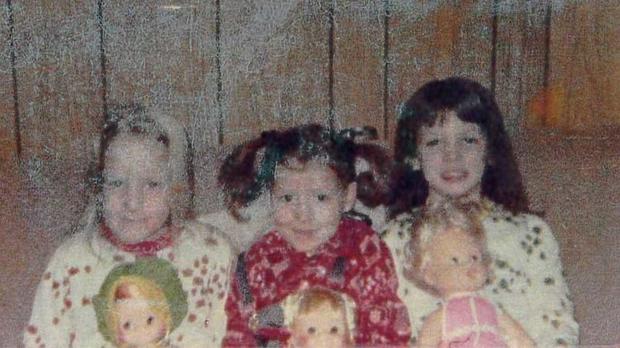
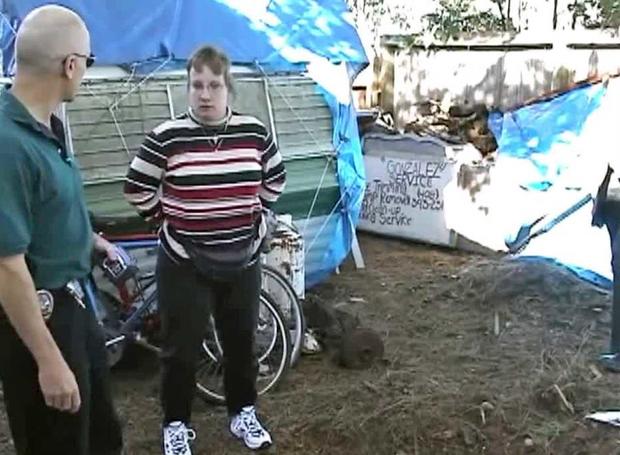
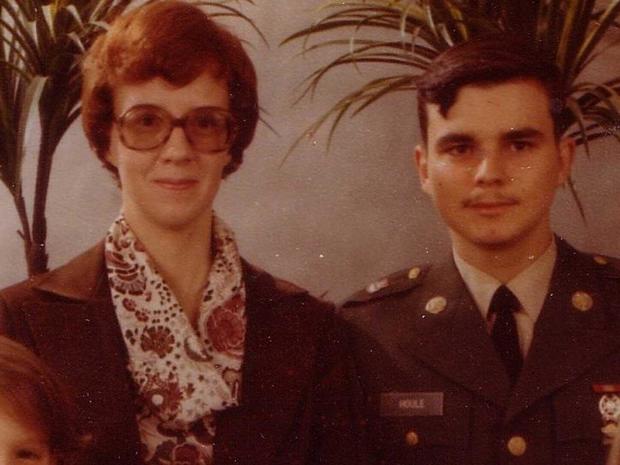
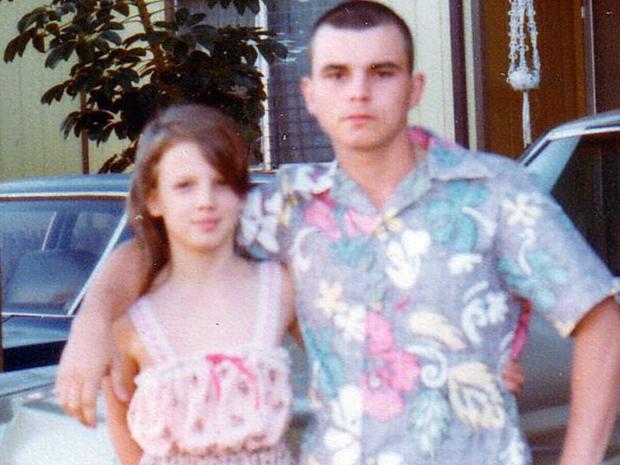
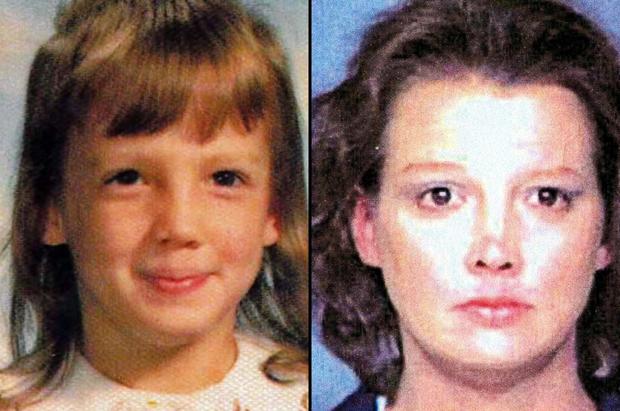
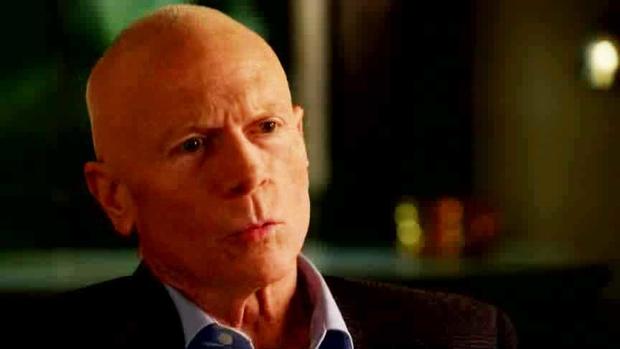
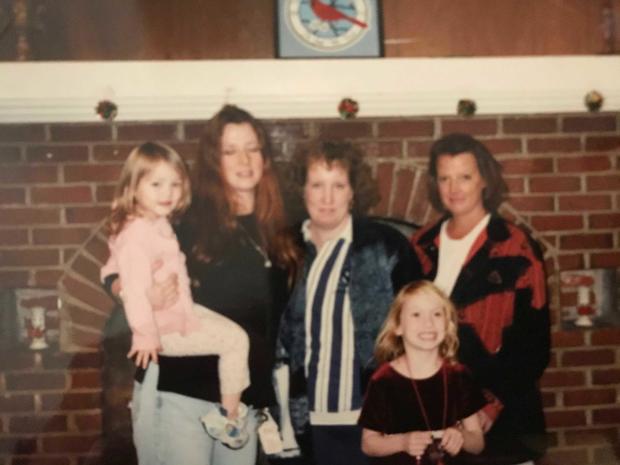
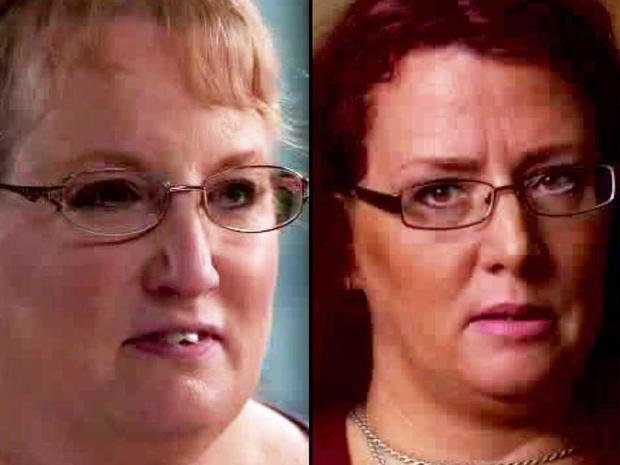
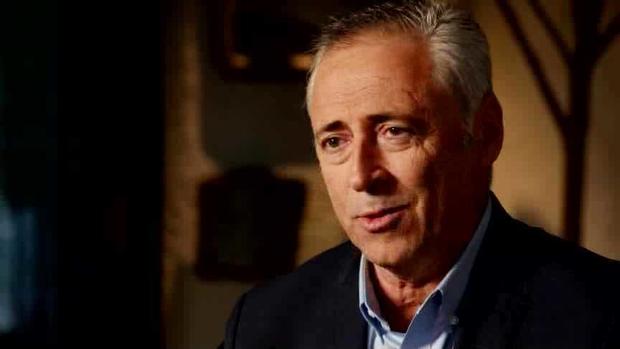
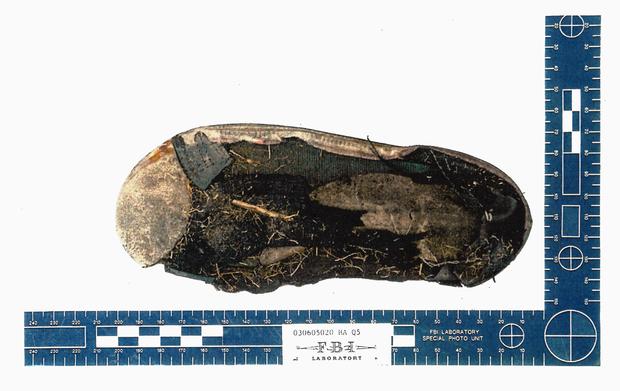
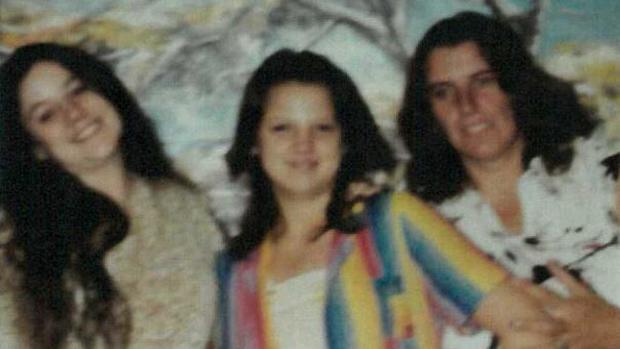
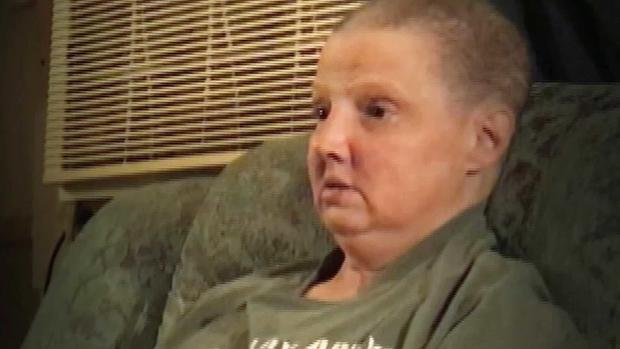




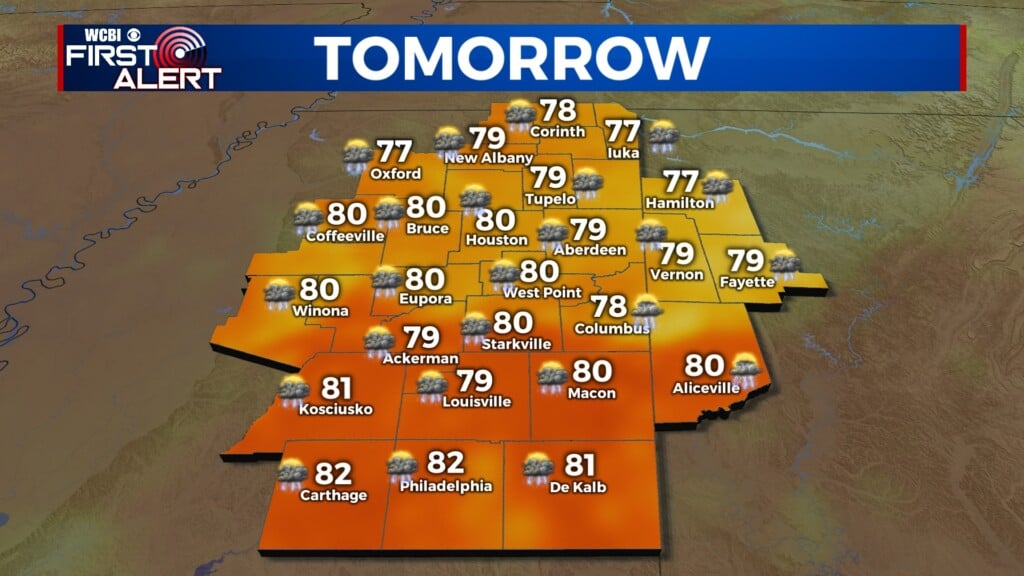
Leave a Reply